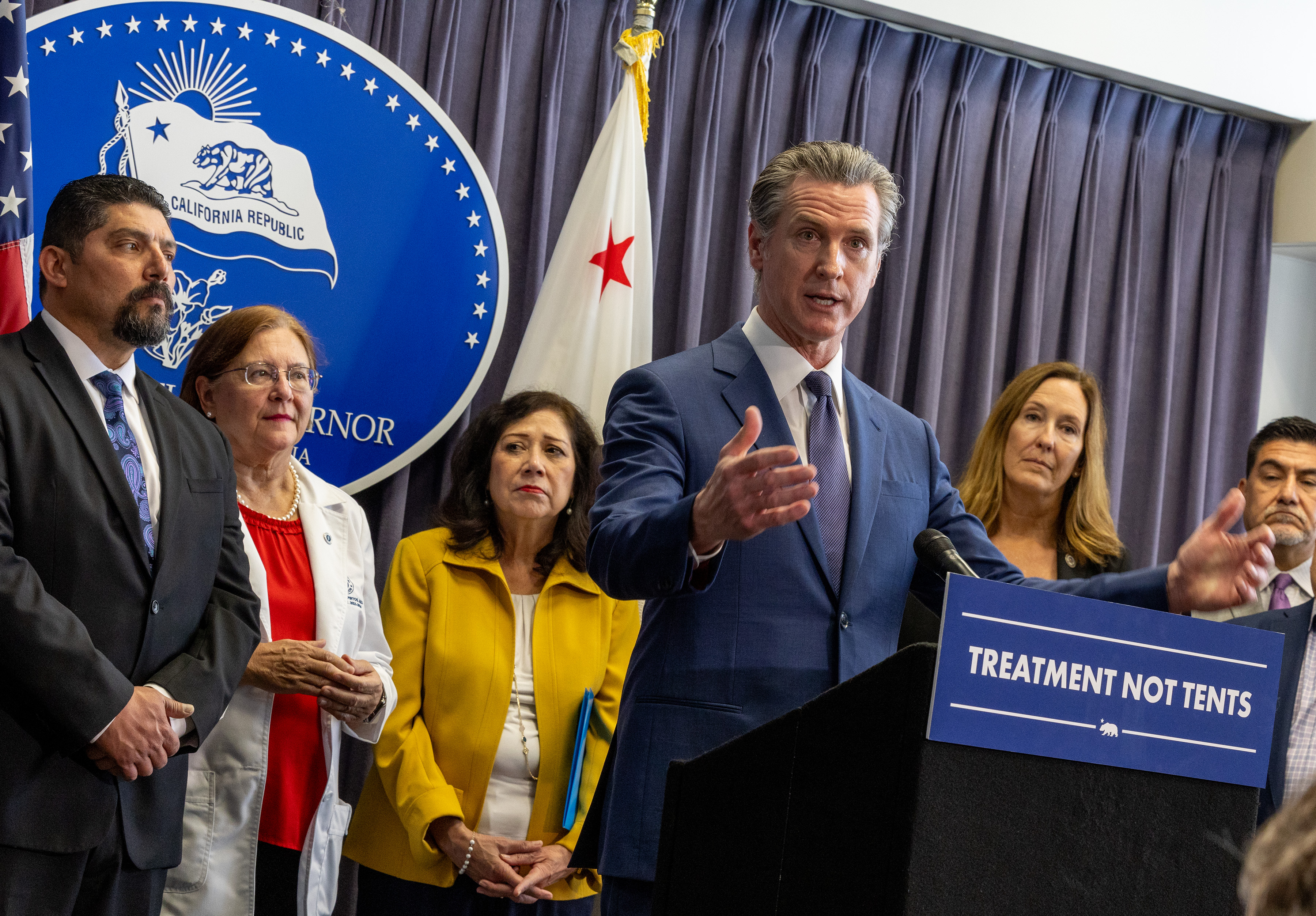Two plumes of toxic chemicals which have been lurking underground for three decades have now prompted an inquiry by California's cancer registry after NBC Bay Area's Investigative Unit began asking questions.
The two plumes make up two different Environmental Protections Agency (EPA) registered Superfund sites in and around NASA Ames' Moffett Field in Mountain View. The Superfund sites are commonly known as "Middlefield-Ellis-Whisman (MEW) Study Area" and "Naval Air Station (Orion Park) Moffett Field."
Click here to see the EPA's MEW Superfund site
Click here to see the EPA's "Naval Air Station (Orion Park) Moffett Field" Superfund Site
The toxic underground plumes consist mostly of a chemical called Trichoroethylene (known as TCE), a cleaning solvent once commonly used by the military and the budding semi-conducting industry 30 years ago.
The EPA says that TCE is a toxic solvent that causes cancer in people and heart deformities in unborn babies.
After NBC Bay Area's Investigative Unit began asking questions in April, 2012, about possible health effects of the TCE plumes the Cancer Prevention Institute of California (CPIC) opened its own probe.
Local
The cancer registry confirms that after NBC Bay Area asked about possible health effects among people living and working near and above these two plumes that it began investigating whether those Superfund sites under and around Moffett Field could be making people sick.
Though TCE is still used in some industrial application its use and disposal is now closely regulated.
The CPIC has already notified the local health department, Santa Clara County's Department of Health, of its investigation. The CPIC is now running statistical models using Census Bureau tract data matching health data to see if there is a higher than expected incidence of cancer or other illnesses among those people living in the vicinity of the Superfund sites.
California's cancer registry wants to know from health data if the number of cancer cases and other illnesses among those living on top of and nearby these plumes are statistically higher than other similar neighborhoods in America.
But resident Jane Horton doesn't want to wait, she wants the entire site cleaned up now.
"My youngest one was very, very ill for 8 months and they never figured out what was the matter with him," Horton said.
Horton said no one could tell her officially what made her son sick. But she thinks she knows exactly what caused her son's illness.
Trichloroethylene or TCE.
"I think it was TCE," Horton said. "So, in my son's bedroom, it (TCE) was collecting like crazy. his bedroom was the most contaminated room in the house."
The EPA confirms that the contamination came not from the drinking water, although TCE is there as well. But no one was drinking the contaminated water.
Instead, TCE in the groundwater seeped up through the ground and collected in buildings and homes.
Horton finds no small irony that her children may have been put at risk through chemical vapors coming from the very soil where they played. The EPA calls it vapor intrusion where TCE filled air accumulates inside buildings and homes.
In Jane Horton's homes, at times, the EPA measured concentrations of TCE in the air that was 3.7 times the level that the EPA considers safe.
All around this area where the two Superfund sites are located, the problem of toxic vapor intrusion remains. In fact, the EPA says it has tested about 20 buildings on the NASA Ames campus for high levels of TCE. Those results have not come back yet.
EPA's Superfund project manager on this project, Alana lee, says there are at least another 30 buildings at Moffett Field to test. "It (TCE) is a toxic chemical, and a human carcinogen, and so it does pose a potential health risk to those who would breathe the vapors," said Lee who serves as the EPA's project manager overseeing what has become a multi-decade and very complicated cleanup.
When asked about Jane Horton's concern over her family's health and the effects the TCE vapor intrusion might have on them, the EPA's Lee said "We're concerned as well."
The EPA now says the plume of TCE contaminating the groundwater of Mountain View has migrated over the years. The EPA says that monitoring wells around the site show the toxic chemical plume as part of the MEW Superfund site has now moved underground towards San Francisco Bay under NASA's Moffett Field.
There, it joins the similar plume that makes up the second EPA Superfund site "Orion Park."
Click here to see EPA's map of the migrating toxic plumes.
Complicating maters, the EPA confirms that toxic PCBs and asbestos washing off the old decomposing Hangar One at Moffett Field have joined the two plumes of TCE in a huge underground mess in the muck.
"Unfortunately, in the South San Francisco Bay Area, the contamination does adhere to the Bay muds and so forth," Lee said. "So it's very difficult over time to remove that contamination. the clean-up is complex and it will take decades to clean up the site."
While the Department of Defense assigned the responsibility of cleanup of the second "Orion Park" Superfund site to the US Army, the Army does not want to take further action on the site.
Click here to see the Department of Defense's letter assigning responsibility.
But NBC Bay Area's Investigative Unit has learned that though the United States Army wants to take no further action, the EPA, in a letter dated March 20, 2012, takes issue with the Army saying the Army's '..... recommendation for "No Further Action" is premature.'
For more than a month we tried to get a comment from the Army about their role in this and plans to clean this up, but they did not respond to our questions.
Click here to read the full letter and report from the EPA
"There is the potential for vapors to migrate from that contaminated groundwater and up to the buildings which include residences and office buildings," said Lee.
Meantime, this land remains a toxic Superfund site where people live and work every day. "This is the heart of Silicon Valley," said Lenny Siegel, Executive Director for the Center for Public Environmental Oversight, a local environmental watchdog group that has been monitoring the underground plume for years.
"Cleaning it up is like cleaning up a lake one teaspoon at a time and it's going to take decades, maybe centuries to get it down to the levels that the EPA says is safe for drinking water," Siegel said.
A closer look at the EPA's maps of the two plumes reveals another concern: Even as the chemicals remain underground, children at a daycare at the front gate at NASA Ames play in the dirt, located in between the two plumes, one lurking just to the west, the other just to the east.

Click here to see the EPA's map of the two plumes.
NBC Bay Area Investigative Reporter Stephen Stock asked the EPA about that. "If I was a parent of a child who plays in the dirt, should I be concerned?" Stock asked. "The data that we have shows that the groundwater contamination does not go and migrate towards that particular daycare center," said the EPA's Lee. "However, we are looking at all buildings that overlie the groundwater contamination to see if there is a potential health concern."
In fact, the EPA found TCE vapor levels ten times the acceptable levels in one building at NASA Ames. The EPA has worked with NASA and the Navy to reduce that vapor and fix that problem. It plans to test for vapor intrusion on 22 other buildings on Moffett Field in the coming weeks.
To educate and try to alleviate some of those concerns, the EPA and Department of Defense still hold community meetings to update residents about the Superfund sites. So far, to people such as Jane Horton, the news isn't encouraging.
"Do you worry about the health of your children and your neighbors?" Stock asked Horton. "Absolutely!" she replied.
Horton's old redwood built home from the early 1900's now resembles something out of the space age. You can see large pipes fed by machines located in her earthen basement running twelve hours a day, every day, sucking the TCE contaminated air out from under her house and venting it away to the outside.
"I want it cleaned up to zero. I want it cleaned up now," Horton said. "I know they can do that." But Horton fears that won't happen in her lifetime. A lifetime of worry by what still lurks under the ground she walks every day.
"I don't want to have cancer. I don't want my kids to have cancer," said Horton. "I don't want to have to prove that to show this is bad. There's no way to trace this to vapor intrusion because doctors don't know, doctors aren't trained, nobody knows. But how can it be healthy for you to breathe in a solvent?"
The EPA agrees that there are health risks from breathing air contaminated by vapor intrusion. that is why the EPA continues its monitoring and testing of buildings in and around Moffett Field.
The EPA has 112 treatment systems and monitoring wells over and around the two Superfund site areas. So far, the EPA has removed more than 100,000 pounds of the TCE chemical alone, as well as five billion gallons of contaminated drinking water from underground. Thousands of tons of earth have also been removed from the site.
The EPA and the responsible parties have spent more than $160 million dollars both investigating and cleaning up the site so far. but the EPA's Lee admits it will likely be decades more before everything is cleaned up to EPA standards.
Meantime, California's cancer registry is still actively investigating these sites and is expected to report its findings in the coming months.
Click here to read EPA's standards for safe air quality involving TCE Vapor Intrusion in Buildings
Do you have more information on this story or something else you think we should investigatie? Email: Stephen.Stock@nbcuni.com



